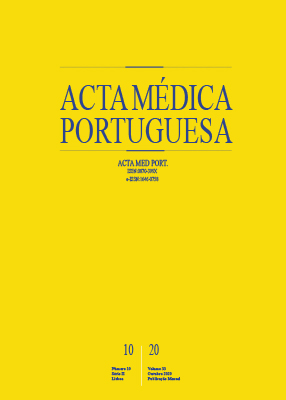Diplopia After Coronary Revascularization
DOI:
https://doi.org/10.20344/amp.11751Keywords:
Diplopia, Myocardial Revascularization, Ocular Motility Disorders, Percutaneous Coronary InterventionAbstract
Percutaneous coronary intervention is a coronary revascularization procedure that may rarely result in thromboembolic events. Although infrequent, ophthalmological complications of percutaneous interventions include a wide range of clinical presentations, with differing severity and outcomes. In this case report, an 83-year-old woman, with multiple cardiovascular risk factors, presents with horizontal diplopia after a percutaneous transluminal coronary angioplasty. After ophthalmological evaluation and a head computed tomography scan, the diagnosis of isolated ischemic internuclear ophthalmoplegia was established. After six months of follow-up, the patient showed complete recovery of her symptoms and ocular movements. We discuss the post-percutaneous intervention ophthalmic complications that, although uncommon, must be recognized by health care providers.Downloads
Downloads
Published
How to Cite
Issue
Section
License
All the articles published in the AMP are open access and comply with the requirements of funding agencies or academic institutions. The AMP is governed by the terms of the Creative Commons ‘Attribution – Non-Commercial Use - (CC-BY-NC)’ license, regarding the use by third parties.
It is the author’s responsibility to obtain approval for the reproduction of figures, tables, etc. from other publications.
Upon acceptance of an article for publication, the authors will be asked to complete the ICMJE “Copyright Liability and Copyright Sharing Statement “(http://www.actamedicaportuguesa.com/info/AMP-NormasPublicacao.pdf) and the “Declaration of Potential Conflicts of Interest” (http:// www.icmje.org/conflicts-of-interest). An e-mail will be sent to the corresponding author to acknowledge receipt of the manuscript.
After publication, the authors are authorised to make their articles available in repositories of their institutions of origin, as long as they always mention where they were published and according to the Creative Commons license.









